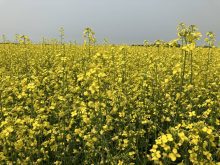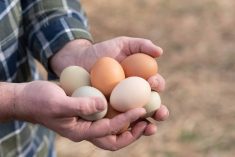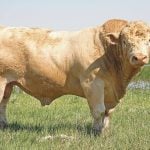As much as I get the general idea behind raising interest rates to keep inflation in check, I do have to wonder if the Bank of Canada and other central banks quite grasp how much their rate hikes over the past couple of years have driven and continue to drive up the cost of literally everything.
Sorry, spoiler alert: this column is mainly about the federal Advance Payments Program (APP), so don’t expect me to ramble much further here about the BoC’s policy interest rate. The bank’s rate hikes are meant to curb borrowing and limit demand for optional purchases, thereby reducing inflation — and sure, I get that. But for any consumers, businesspeople and/or farmers who took on longer-term debt years before the drivers of higher inflation took hold — drivers that neither borrowers nor central banks anticipated, such as Russia’s invasion of Ukraine or the COVID-19 pandemic — it seems to me this policy just makes it more expensive to pay down that debt and forces businesses to raise prices to cover even higher overhead obligations, without allowing for much, if any, of the increased saving that the central bank expects to also encourage from Canadians.
Read Also

Gentle treatments for pain in the neck
Heading toward year-end, people unknowingly tense up against the cold and busyness, causing neck pain that can often be treated with appropriate support and gentle mobility, athletic therapist Kathlyn Hossack says.
Which brings us to the APP, a program providing farmers with cash advances of up to $1 million, of which (usually) the first $100,000 is interest-free. As costs and other pressures climbed in 2022, that interest-free chunk was boosted to $250,000, and again to $350,000 for the 2023 program year. It was set to slip back to the $100,000 mark for 2024, before the feds announced on March 25 that the interest-free portion again gets a bump to $250,000.
Good deal, if you can get it. As the costs of borrowing and the costs of everything else rise, a program that allows you — a provider of many of the basic necessities all consumers are expected to keep buying while cutting spending elsewhere — to finance your inputs relatively cheaply makes all kinds of sense. And, by raising the interest-free portion again for 2024, the feds estimate that about 11,950 participating farmers will save, on average, another $4,916 in interest costs, up to $58.7 million in all.
If the number of expected participants looks low to you, you’re not alone. “Despite several farm management advantages that the APP offers, many producers do not take advantage of it,” Alberta crops market analyst Neil Blue said in late 2022 — noting, even then, that “considering the rising interest rates, there is even more reason to consider” the APP. Accounting firm MNP has said it finds many farmers still shy away from the APP “because they believe it requires too much work. However, there is just one application, resulting in minimal paperwork, so the program delivers excellent value for the time invested.”
Is that the case, though, as we head into seeding in 2024? Is the APP still too much trouble? Is the maximum advance, or the interest-free portion, too small as farms get larger? Are the security requirements too onerous, given the types of commodities you grow or raise? Or is it that, no matter what kind of shave-and-haircut it’s given, debt is debt — and the last thing you want or need is more of that, if you can avoid it?
If it’s any of those reasons or even better ones I haven’t yet heard, drop me a line.
Corrections and clarifications
Changing the subject entirely: if I had to make a very rough guess, I’d say we publish at least 600,000 words a year these days. Odds are, at least a few of those words aren’t going to be the ones we intended. I want to have any corrections and/or clarifications appear in this specific space, because I want to be up front about these things, and you won’t get much more up-front than page 3 without making the front cover look all weird.
On page 14 in the March 19, 2024 issue, we led with a photo of a half-green, half-yellow canola field in the article “How To Make P Management More Sustainable.” In the caption we said the right side had potassium and sulfur fertilizer applied in the seed row at planting and the left side did not. Of course we meant to say the right side had phosphorus and sulfur fertilizer applied in the seed row at planting. We regret the error, which I’ve already fixed in the online version.
Also, a clarification: in “Bless Your Mess,” the front page article from the March 5, 2024 issue, we said early research data shows up to 12-15 per cent of Western Canada’s farm fields perform at marginal levels. We’d like to clarify that the 12-15 per cent figure is based on an “informed guess” by the researchers based on that early data, rather than on hard figures from the research in question. We’ve already made that note in the online version.
Thanks, Jim
Before we go: on behalf of everyone here — and that includes you — I’d like to convey our appreciation for Jim Timlick, who’s been your full-time staff reporter here since October 2022. With the bulk of our pre-seeding run of papers now safely delivered to your mailboxes, Jim has decided to pursue opportunities outside the Glacier FarmMedia shop. If all goes according to plan, some of those opportunities will still have him writing for you in these pages. Beyond these pages, we’re all looking forward to reading more of his work wherever his considerable skills and talents take him. Cheers and many thanks to you, Jim.
















